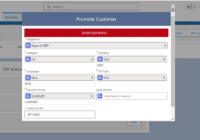Optimizing Log Management: Automating Deletion of Logs, Import Job Logs, and Integration Statistics
In a previous blog, we explored how GUMU™ simplifies log management. In this blog, we dive deeper into the enhanced features of automating deletion of log records, exploring practical implementation strategies, and providing insights on maximizing its benefits for the organization. This new functionality will provide users with the ability to delete Import_Jobs__c and Integration_Statistics__c… Read More »


